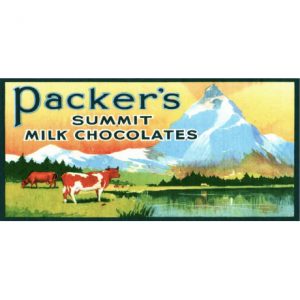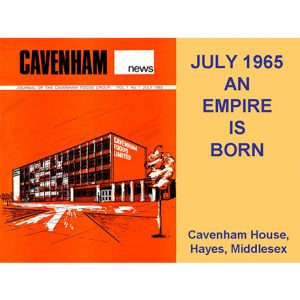

History
The Chocolate Factory is a new mixed-use development seamlessly blending the site’s rich industrial heritage with modern living, all with the community at the heart.

Edward Packer sets up his ‘confectionary works’ at 47 Armoury Square, just off Stapleton Road in Easton with one employee, his nephew Joe Flook.

HJ Burrows joins the company and the operations expand, moving from Easton to a larger house on Orange Street in St Pauls, off Portland Square.

Bruce Cole, a salesman from Clifton who sold sugar to the company, borrows £1000 from his father and purchases the business, keeping the trading name H J Packer & Co.

H J Packer & Co. decides to upscale from its home in St Pauls and acquires the larger Greenbank site on which to build modern factory buildings to increase production.

Machinery is transferred to the Greenbank site and the employees get used to the new larger factory buildings and modern manufacturing equipment.

Packers invite all of their UK suppliers to an all expenses paid trip to Bristol for three days of tours and entertainment, including a dinner at the Colston Hall.

As chocolate becomes more popular and the workforce grows the 4th section of the factory buildings and the office block on the end of Co-Operation Road are added to the Greenbank site.

Packer’s becomes a limited company, employing over 1,000 people and producing over 250 tonnes of chocolate per week.

Packer’s acquire Scottish firm Carsons, manufacturers of high quality hand-made chocolates, and moves production from Glasgow to Bristol.

Bruce Cole builds the sports pavilion and recreational ground including bowling green, cricket pitch and tennis courts to enhance the lives of his employees and support local sports teams.

Packers repurposes its pavilion, turning it into a hospital and renaming it The Bruce Cole Institute, helping wounded soldiers and providing comfort for Belgian refugees in WWI.

The tradition of the Annual Christmas Treat begins, where the workforce and their families were treated to tea in the sports pavilion, along with entertainment and chocolate gifts for the children.

The company privately hires two GWR trains to take 800 employees to the British Empire Exhibition the first expo of its kind to showcase British industry and trade, in Wembley, London.

Packer’s announce plans for the Bristol Housing Company to build 40 homes for employees within the grounds of the factory on the edge of the recreation field in Whitehall.

A severe worldwide financial crisis and drop in demand hits the company hard and means employees from top to bottom are forced to take 10% pay cuts.

Many male workers are called upto fight in WWII, and the majority of production is left in female hands. The company is commissioned to supply chocolate to the Navy and Army Canteen Board.

Queen Mary pays a wartime visit to the factory to meet the workers and the American Army use part of the factory as a store for their supplies.

after a stagnant post war period, as raw materials become available once again and the last vestiges of wartime rationing come to an end, new lines go into production.

The high cost of raw materials, intensified competition and an abnormally hot summer leads to trading struggles and losses for the company

Restructuring sees the company change its parent company name from H.J. Packer’s Ltd. to Carson’s Ltd.

Known for their chocolate liqueurs, Carson’s becomes the first British firm to adopt a spinning method for forming chocolate shells made of bitter sweet chocolate.

Slough based Cavenham Confectionary take over operations and moves production of Sweet Cigarettes, Walnut Whirls and Goodies to Greenbank.

£350,000 is put aside to modernise the factory buildings and their facilities to create better working conditions for employees and increased production.

Cavenham acquire Elizabeth Shaw, moving production of their classic Mint Crisps, Mint Creams and After Dinner Mints to Greenbank.

The modernisation of the factory buildings is complete. Employees now have a canteen, lockers, a washroom and parking on site.

Over 750 people are now employed at the Greenbank site and the company turns over £27 million that financial year, reinforcing its position as a market leader.

The company name is changed to match its best-selling line of chocolate liqueurs, famous around the world for their bittersweet chocolate shell and boozy liquid interiors.

The firm is sold to Imperial Tobacco. Robotic packing and semi-automatic chocolate-making machines revolutionise the production line.

After a round of difficult boardroom negotiations The Hanson Trust gain control of Imperial Tobacco and once again the company changes ownership.

Building on the success of the internationally popular Mint Crisp range the company is renamed Elizabeth Shaw Ltd.

Elizabeth Shaw Liqueur Chocolates dominate the UK market, with a 49% share. The factory permanently employs nearly 250 people and takes on another 300 seasonal workers.

Peppermint Creams continue to be a favourite in the royal household and on 18 September Princess Diana visits and meets 550 workers.

The Famous Names range of chocolate liqueurs returns to production, along with vodka shot chocolates and Mint Crisp Truffles.

Major changes see factory operations reduced and staff laid off as the firm starts buying-in liquid chocolate from another UK manufacturer.

Operating at only 40% capacity production is moved to Eastern Europe. On 7 September 2006 the remaining 60 staff gathered to cut the farewell cake as the factory closed its doors for the last time.

Later that year Persimmon Homes submit an application to build 108 homes, offices and a café. Fierce lobbying from local residents keen for a sensitive redevelopment of the site keeping the original buildings ensures the application is refused.

Ownership passes to SquarePeg and architects Acanthus Ferguson Mann design a scheme that retains the Victorian buildings and provides 252 homes, offices, a youth hostel and a café.

The proposals are granted planning permission but the economic crash renders the scheme financially unviable. During the era of austerity the buildings lie vacant, vulnerable to pillaging and decay.

After lying empty for nearly a decade, Generator South West purchase the site and go back to the drawing board for a lengthy 2 year consultation with local residents and community stakeholders.

Generator South West is granted planning permission to build 140 new homes, workspace, a café/bar and a community hub centred around a public open square with access to the Railway Path.

Extensive work begins to demolish derelict structures beyond repair and preserve some of the original factory buildings including the 1960’s concrete frame at the centre of the site.

Opening an Information Centre in the original office building on Co-Operation Road, Generator South West share their vision for The Chocolate Factory with the community of Greenbank and the first homes go on sale.

Greenbank’s Community grows as our newest residents begin to move in to their new homes at The Chocolate Factory.

Generator South West hand over 20 shared ownership homes to Abri, which go on to gain national recognition when Highly Commended in the Evening Standard Property Awards for Best Apartment.